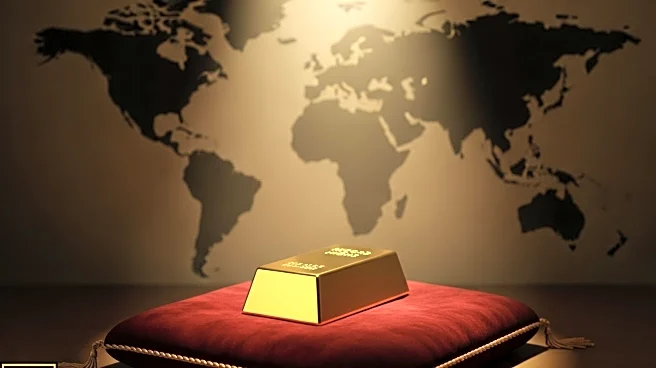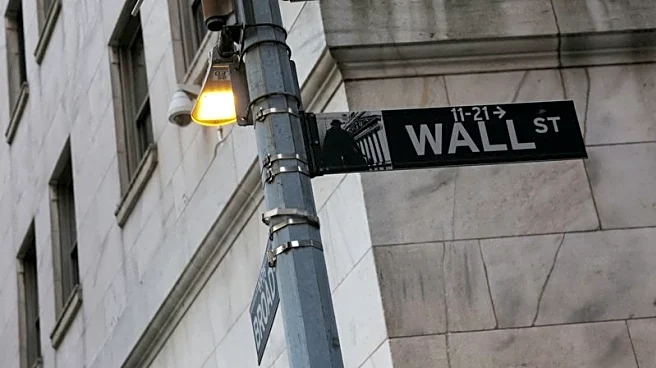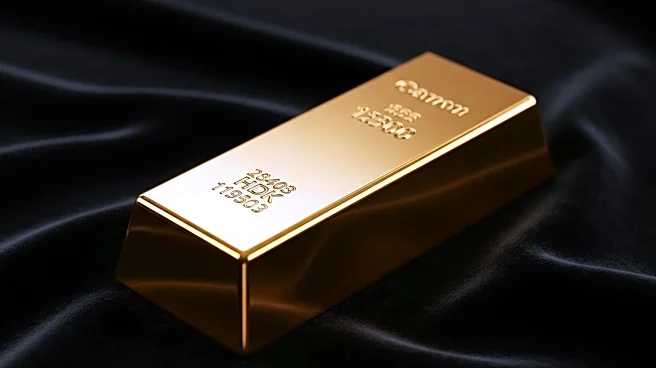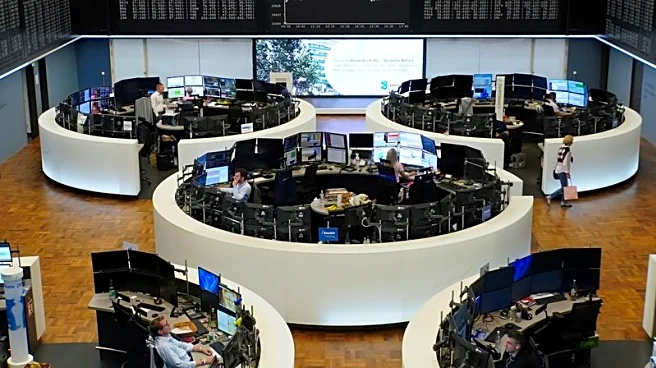What's Happening?
Gold prices have reached new all-time highs, with futures hitting approximately $3,800 per ounce in late September 2025. This surge is driven by a combination of factors including expectations of further U.S. interest rate cuts, elevated inflation, and increased demand for safe-haven assets amid geopolitical conflicts. Major financial institutions like Goldman Sachs and UBS have forecasted continued growth in gold prices, with targets set at $4,000 and $3,900 per ounce respectively. Central banks have also been purchasing gold at record levels, further supporting the rally.
Why It's Important?
The rise in gold prices reflects broader economic and geopolitical uncertainties. As a traditional safe-haven asset, gold is attracting investors concerned about inflation and geopolitical risks, such as the ongoing Russia-Ukraine conflict and tensions between major powers. The Federal Reserve's dovish monetary policy stance, including recent interest rate cuts, has lowered real yields, making gold more attractive. This trend indicates a shift in investor sentiment towards tangible assets amidst fears of overvalued equities and potential market volatility.
What's Next?
Analysts predict that gold prices may continue to rise, potentially reaching $4,000 per ounce by mid-2026. The Federal Reserve's future interest rate decisions will be crucial, as further cuts could sustain the rally. Additionally, geopolitical developments and central bank policies, particularly China's move to become a custodian of foreign gold reserves, could influence global demand for gold. Investors will closely monitor these factors to gauge the sustainability of the current bull market in gold.
Beyond the Headlines
The surge in gold prices highlights the strategic importance of gold as a reserve asset for central banks, especially in times of geopolitical instability. China's initiative to store foreign gold reserves could shift the global gold market dynamics, potentially increasing the yuan's role in international finance. This development underscores the growing appeal of gold as a hedge against economic and political uncertainties, reinforcing its status as a critical component of national financial strategies.











